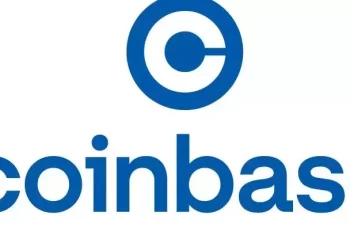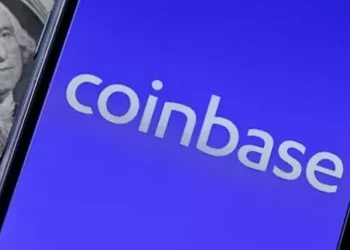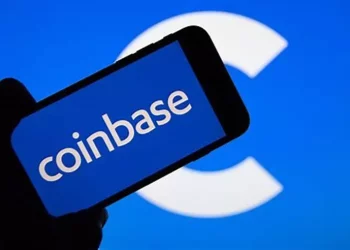In the rapidly evolving world of cryptocurrency, one of the most important things to consider is how to securely store and manage your digital assets. While cryptocurrency exchanges offer a place to buy, sell, and trade assets, they do not provide full control over your assets. This is where a cryptocurrency wallet comes in, and Coinbase Wallet is one of the most popular options available. In this article, we’ll delve into the Coinbase Wallet app, explaining its features, how it works, and why it might be the right choice for managing your cryptocurrencies.
What is Coinbase Wallet?
Coinbase Wallet is a self-custody, decentralized cryptocurrency wallet that allows users to store, manage, and interact with a wide variety of digital assets, including cryptocurrencies, tokens, and even decentralized applications (dApps). Unlike the wallet that comes with a standard Coinbase exchange account, the Coinbase Wallet app operates independently of the exchange and gives users full control over their private keys and digital assets.
The Coinbase Wallet app is a non-custodial wallet, which means that users are responsible for their own security and the management of their private keys. It operates as a decentralized wallet, meaning no third party, including Coinbase itself, can access or control your assets.
Key Features of Coinbase Wallet
Coinbase Wallet offers several key features that make it an attractive choice for cryptocurrency users:
Full Control Over Your Assets:
With Coinbase Wallet, users retain complete ownership of their cryptocurrencies, unlike when using the exchange wallet.
You are in control of your private keys, meaning only you have access to your funds.
Support for Multiple Cryptocurrencies:
Coinbase Wallet supports a wide range of digital assets, including Bitcoin (BTC), Ethereum (ETH), Litecoin (LTC), and various ERC-20 tokens.
It also supports non-fungible tokens (NFTs), allowing you to store digital collectibles.
Easy Integration with dApps:
The wallet allows you to seamlessly interact with decentralized applications (dApps), such as decentralized exchanges (DEXs) and lending platforms, directly from the app.
It is compatible with Ethereum-based dApps and offers easy access to the broader decentralized finance (DeFi) ecosystem.
Multi-Currency and Cross-Chain Compatibility:
Coinbase Wallet supports multiple blockchains and allows users to store and manage assets across several networks. This cross-chain compatibility provides users with flexibility in managing assets from different blockchain ecosystems.
Security Features:
Coinbase Wallet uses top-notch security features to protect your assets, including a secure seed phrase, biometric login, and password protection.
The app also has two-factor authentication (2FA) and the ability to set up additional layers of security for even greater protection.
User-Friendly Interface:
Coinbase Wallet is designed to be easy to use, with a simple and intuitive interface that is suitable for both beginners and experienced crypto users.
The app allows you to view your balances, transaction history, and manage your assets easily through a clean and well-organized interface.
Support for NFTs and Collectibles:
One of the most exciting features of Coinbase Wallet is its ability to store NFTs and other digital collectibles. This makes it an attractive wallet for people involved in the NFT space.
You can view, send, and receive NFTs within the wallet app, making it easy to manage your collection.
How Does Coinbase Wallet Work?
Coinbase Wallet operates on a decentralized model, meaning it does not store your private keys or assets. Instead, the private keys are stored locally on your device, and only you have access to them. This is in contrast to custodial wallets, which are provided by exchanges like Coinbase, where the exchange holds control over your assets.
Here’s how the Coinbase Wallet app works:
Private Key Ownership:
When you create a Coinbase Wallet account, you are given a unique 12-word recovery phrase. This phrase is critical for recovering your wallet if you lose access to your device. It is also used to back up your wallet.
Your private keys are stored securely on your device and are never shared with Coinbase or any third party.
Receiving and Sending Cryptocurrencies:
To receive cryptocurrencies, you provide your wallet address, which can be easily found within the app.
Sending cryptocurrencies is as simple as selecting the asset you wish to send, entering the recipient’s address, and confirming the transaction.
Coinbase Wallet also allows you to scan QR codes to make transactions even easier.
Using dApps and DeFi:
Coinbase Wallet gives you the ability to access decentralized applications (dApps) directly from the app. You can use these apps to trade tokens, lend or borrow assets, and participate in various DeFi protocols.
To interact with these dApps, simply connect your Coinbase Wallet app to the platform of your choice and approve the transaction through your wallet.
Interacting with NFTs:
If you own NFTs, you can view and manage them directly within the Coinbase Wallet app.
You can also send or receive NFTs, or connect your wallet to NFT marketplaces to buy or sell collectibles.
Security Features:
To keep your assets safe, Coinbase Wallet offers several layers of security, including biometric authentication (such as fingerprint or face recognition) and PIN protection.
Additionally, the wallet uses encryption and other advanced security measures to ensure your private keys remain secure.
Benefits of Using Coinbase Wallet
There are many advantages to using Coinbase Wallet over other types of cryptocurrency wallets, including:
Security and Control:
As a non-custodial wallet, Coinbase Wallet ensures that you are the only one who can access and control your assets. This is particularly important for long-term holders who want full control over their private keys.
Ease of Use:
Coinbase Wallet is designed to be beginner-friendly while still offering advanced features for more experienced users.
The simple interface and easy navigation make it easy to manage your assets, while advanced users can take advantage of the wallet’s compatibility with DeFi apps and NFTs.
Integration with the Coinbase Exchange:
Although Coinbase Wallet is separate from the Coinbase exchange, it is still highly integrated with the exchange. This allows for an easy transfer of assets between your Coinbase Wallet and your Coinbase exchange account.
This integration makes it convenient for users who already use Coinbase as their primary exchange and want to store their assets in a secure, self-custody wallet.
No Fees for Receiving Cryptocurrency:
Coinbase Wallet does not charge any fees for receiving cryptocurrencies. However, transaction fees may apply when sending or swapping assets on the platform, as these fees are based on the network you are using (e.g., Ethereum gas fees).
Cross-Chain Support:
Coinbase Wallet supports multiple blockchains, including Ethereum, Bitcoin, and many other networks. This cross-chain support allows you to store a variety of assets in one wallet, providing flexibility and ease of use.
NFT Storage:
If you are into NFTs, Coinbase Wallet is an excellent choice for storing your digital collectibles. It supports ERC-721 and ERC-1155 tokens, which are the most popular NFT standards on the Ethereum blockchain.
How to Set Up Coinbase Wallet
Setting up the Coinbase Wallet app is a straightforward process. Here’s a step-by-step guide to getting started:
Download the App:
Download the Coinbase Wallet app from the App Store (for iOS users) or Google Play (for Android users).
You can also access Coinbase Wallet through the web browser extension.
Create Your Wallet:
Open the app and follow the instructions to create a new wallet. You will be asked to create a secure password and write down your 12-word recovery phrase.
Store the recovery phrase in a safe location. It’s important not to share it with anyone, as it grants access to your wallet.
Add Assets:
Once your wallet is set up, you can add cryptocurrencies to it by receiving them from another wallet or exchange. Simply click “Receive” and choose the cryptocurrency you wish to receive.
You will be given a wallet address or a QR code to share with the sender.
Set Up Security Features:
After setting up your wallet, go to the security settings to enable two-factor authentication (2FA) and choose your preferred method of authentication (biometrics or PIN).
It’s also a good idea to enable a backup option, such as iCloud or Google Drive, to securely back up your wallet.
Connect to dApps:
Coinbase Wallet allows you to interact with various decentralized applications. Simply browse or search for the dApp you want to use, connect your wallet, and authorize any necessary transactions.
Potential Drawbacks of Coinbase Wallet
While Coinbase Wallet has many benefits, there are also some drawbacks to consider:
Responsibility for Security:
Since Coinbase Wallet is a non-custodial wallet, you are solely responsible for the security of your private keys. If you lose your recovery phrase or forget your PIN, there is no way to recover your wallet or assets.
This places a greater burden on users to ensure they are properly safeguarding their wallet information.
Transaction Fees:
While receiving cryptocurrencies is free, sending assets or using decentralized apps often comes with transaction fees. These fees are dependent on the blockchain you’re interacting with (e.g., Ethereum gas fees).
Not as Integrated as Custodial Wallets:
While Coinbase Wallet is fully integrated with Coinbase for asset transfers, it may not be as seamless as custodial wallets provided by the exchange itself. However, the trade-off is more control and security over your assets.
Conclusion
Coinbase Wallet is a powerful and secure tool for managing and storing cryptocurrencies. It offers users full control over their assets, supports a wide range of digital assets, and integrates with decentralized applications, making it an excellent choice for both beginners and advanced users. By allowing users to store NFTs, participate in decentralized finance (DeFi), and interact with dApps, Coinbase Wallet provides all the essential features needed to manage digital assets securely and effectively. However, as with any cryptocurrency wallet, it is important to understand your responsibilities regarding security and backup, as losing access to your private keys means losing access to your assets.
Related topics:

















